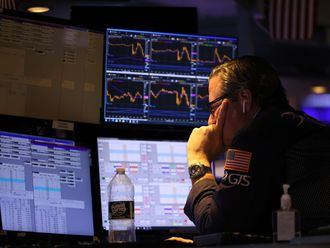
With income inequality and the gender gap such hot topics at World Economic Forum 2018, it’s not surprising so many CEOs see investing in advanced technology a safer bet for bigger returns than putting their money into people and human capital.
In fact, in “The Trillion-Dollar Difference”, a recent Korn Ferry global economic survey, 67 per cent of CEOs said they believe that technology will create greater value in the future than human capital will. And 63 per cent believe technology will become their firm’s greatest source of future competitive advantage.
But while business leaders see a perceived need to invest in technology to maintain a competitive advantage, many appear equally anxious about the ability to keep up with the incredible pace of change today. They are anxious about investing in technology to stay on par with disruptive interventions but also concerned about managing expectations of a new age workforce – the millennials who have different drivers and motivations.
And the general workforce is equally anxious as they want to be better prepared for the future of work where there are still plenty of opportunities but the needs and roles are now and different.
In his WEF Keynote this week, Justin Trudeau, Prime Minister of Canada, a big proponent of investment in AI, empathized with those who fear the impact of advanced technology on the future of work around the world:
“This current step, involving automation and AI, as the obvious examples, will totally revolutionize the world of work – in many ways, they already have. As business leaders, I know you view these as both exciting and challenging advancements. You are rightly anxious about how quickly our existing business models are being disrupted. Still, if you’re anxious, imagine how the folks who aren’t in this room are feeling.”
But it was the first and only Minister of Artificial Intelligence, His Excellency Omar Bin Sultan Al Olama, the UAE Minister of AI, who not surprisingly brought a different and fresh point of view to the question of what delivers greater return: investing in people or technology.
In his interview on CNN International from WEF, Minister Olama reminded us that every major leap in business evolution, starting with first industrial revolution all the way up to today’s world of social media, has inspired both fear and innovation. And yet all ultimately led to job creation rather than destruction. Job creation driven by those who are most agile and adaptable to change.
That’s why the UAE is training 500 people in AI. Both to innovate the adoption of AI in solving real world problems and to begin to prepare the UAE workforce to be ready for the new wave of jobs. It’s also why His Highness Shaikh Mohammad Bin Rashid Al Maktoum, Vice-President and Prime Minister of the UAE and Ruler of Dubai, recently launched the “One Million Arab Coders Initiative” to provide free training in developing computer codes to one million young Arabs.
These types of programs are even more inspiring and visionary when you consider the demographics of the UAE workforce. The Korn Ferry research covered more than 2,000 companies across the region. It showed the majority of any large employer’s workforce in the UAE, whether in government or the private sector, is in the 30 to 35 age bracket. And the majority of top-level leaders are much younger than global counterparts. The average age of the UAE leadership community is in their 40s as opposed to a global average where business leaders are in their late 50s.
These demographics are both interesting and favourable to the UAE. They also point to a greater need for people management with increased investments in talent assessments, leadership development and employee engagement. And they tell us the balance between investment in people and technology is even more crucial here.
That’s why it’s all about planning and preparing for the future for the well-being of the people. Not about choosing technology over people.
Minister Olama nailed the blind spot too many CEOs have today when it comes to people and technology. It’s not about one or the other. It’s about investing in and preparing the workforce of today and tomorrow to make sure businesses are best positioned to deliver the value creation and sustainable growth investment in technology is intended to deliver.
Korn Ferry’s “The Trillion-Dollar Difference” report also shines a light on the blind spot Minister Olama hit on. It showed that human capital represents to the global economy a potential value of $1,215 trillion, or 2.33 times greater than physical capital that includes tangible assets like technology, real estate and inventory, which should be valued globally at $521 trillion.
But what was more telling from the research was the evidence that human capital is the greatest value creator available to organizations. For every $1 invested in human capital, $11.39 is added to GDP. That return – value versus cost – should give a clear signal to CEOs that investing in people can generate greater value for an organization over time that significantly exceeds initial financial outlay.
The real challenge facing business leaders today isn’t about choice, whether to invest in people or technology. Both matter to competitive advantage and sustainable value creation. It’s about how to ensure business is best aligned and positioned to realize maximum return on investment from both sides of the equation.
That alignment comes from ensuring the workforce of today is being prepared to deliver as the workforce of tomorrow in three fundamental ways:
-It starts with making sure businesses are armed with the right talent, with people who bring to the table a certain set of skills and experience while at the same time are adaptable to growth and change.
-That growth and change comes from investing in well-structured leadership, talent and skills development programs, which have to ensure future leaders are better prepared for the future of work. Today’s leaders need to be more agile and accepting to new ideas and innovation from their people. And not just technology, but new processes and management ideas. This is a challenge for leaders in this market who tend to have a more directive leadership style in comparison to other mature economies around the world.
-And it’s about ensuring a company’s organizational structure and talent deployment strategy empower the right people in the right jobs. Many organizations have great core business leaders. And some have strong “born digital” leaders. But very few organizations have demonstrated an ability to develop a cadre of leaders who have core business and digital expertise coupled with the orientation to drive the right balance. Organizations need to proactively work towards building a pool of such leaders.
Both Prime Minister Trudeau and Minister Olama got it right at WEF 2018. The pace of change can be both exciting and daunting. And it can make even the most experienced business leaders anxious. But CEOs as well as government leaders have an opportunity to do more and deliver more from their investments in both people and technology. If they get the balance right.
Harish Bhatia is a partner at organizational consulting firm Korn Ferry International MENA Region












